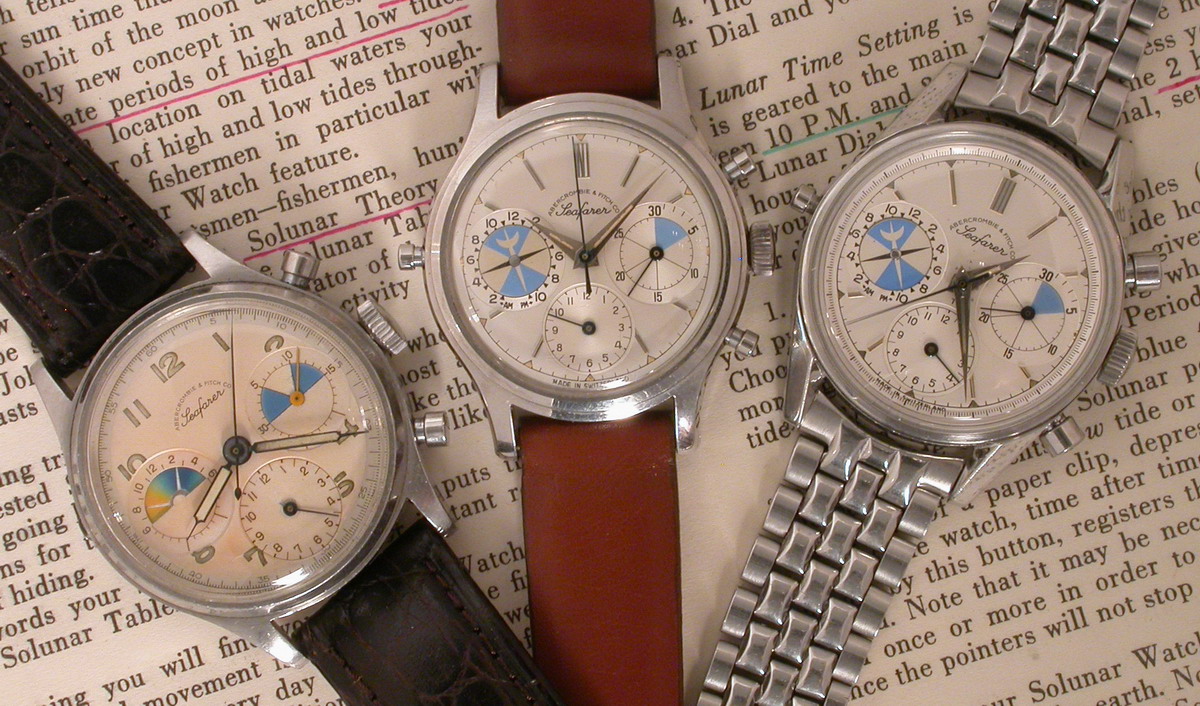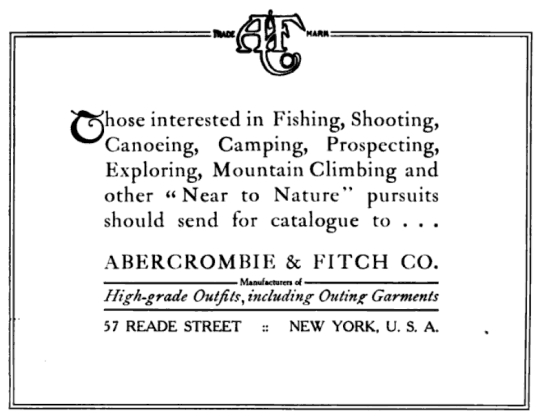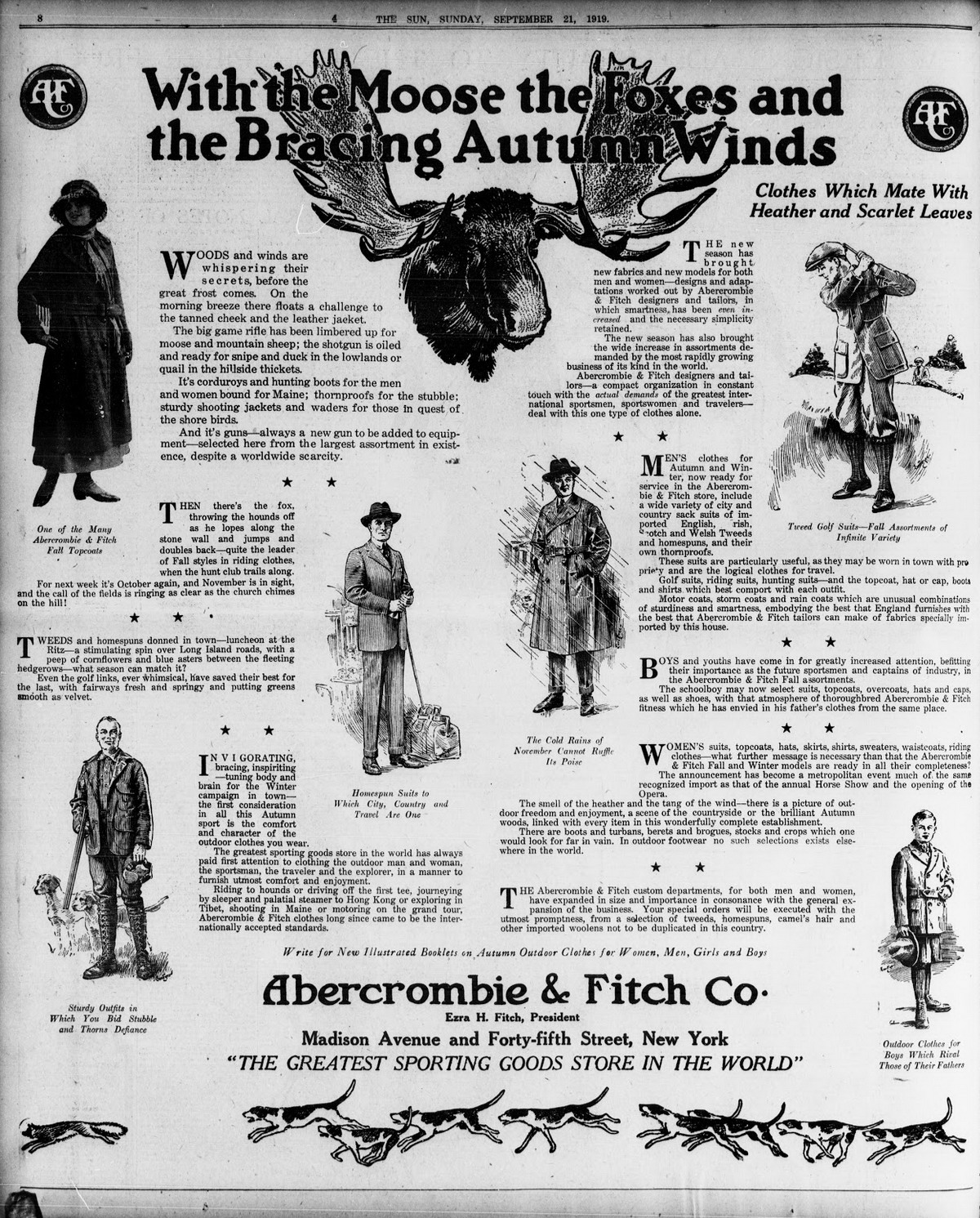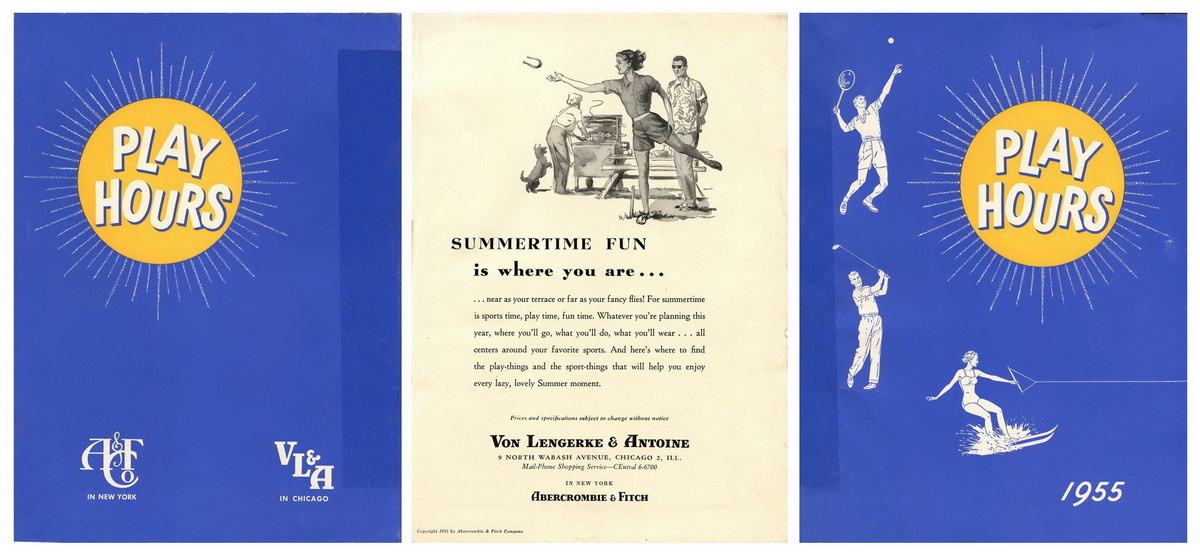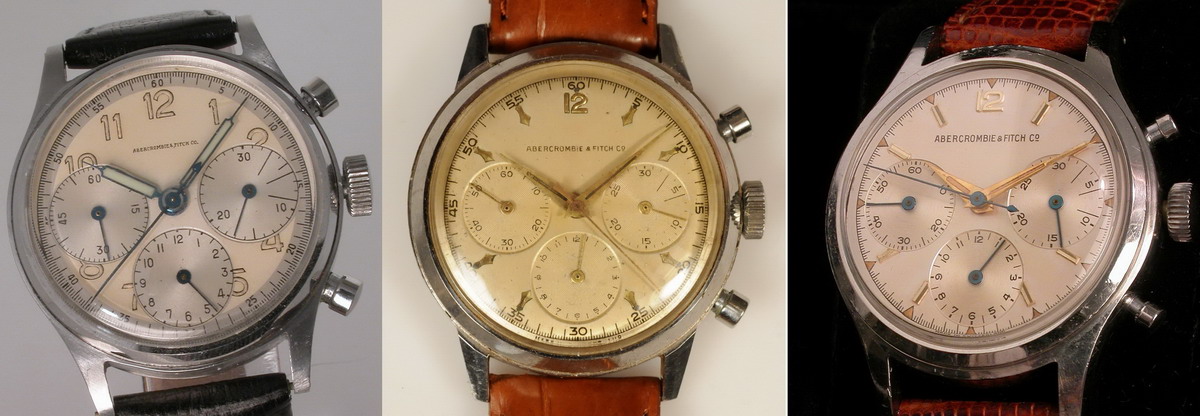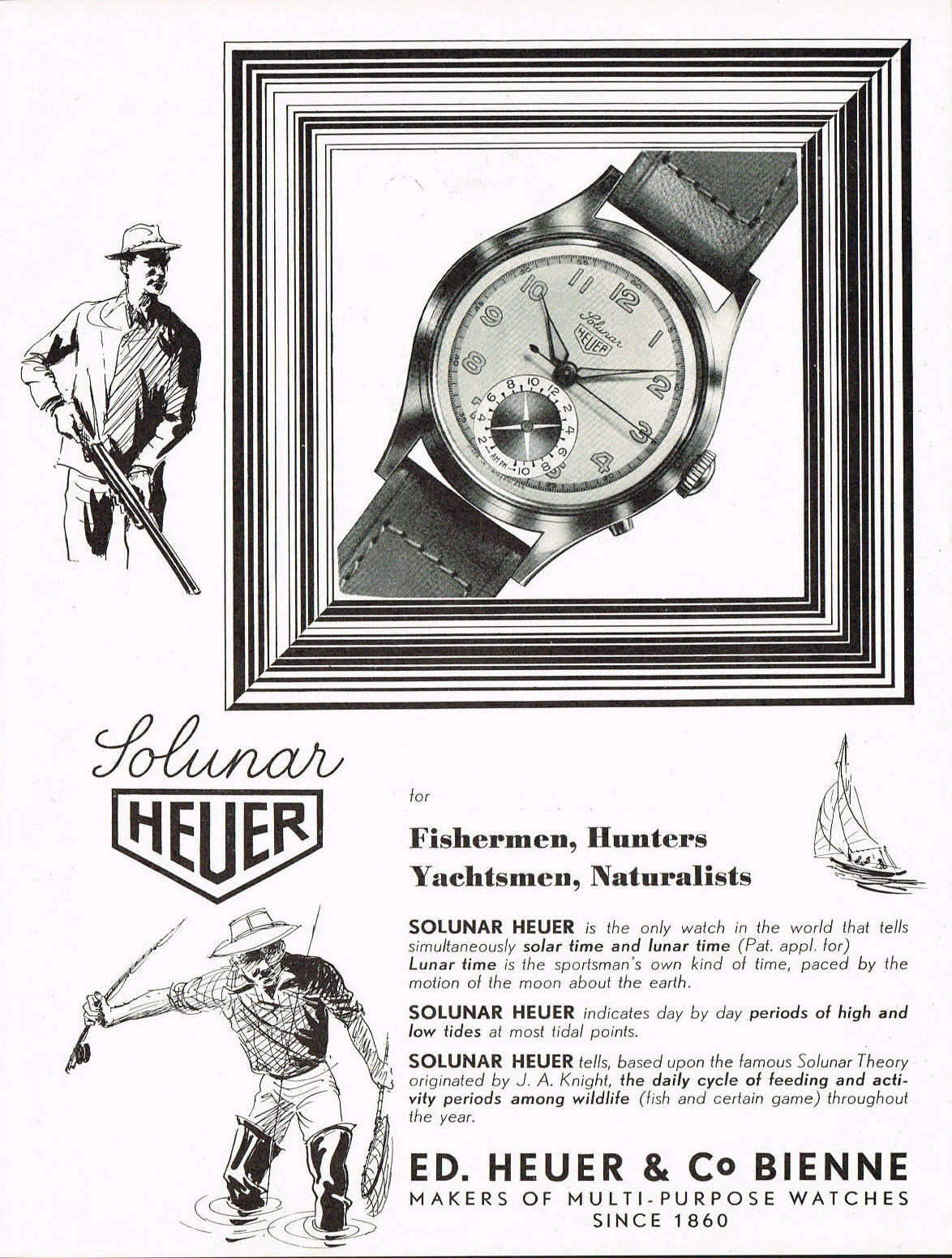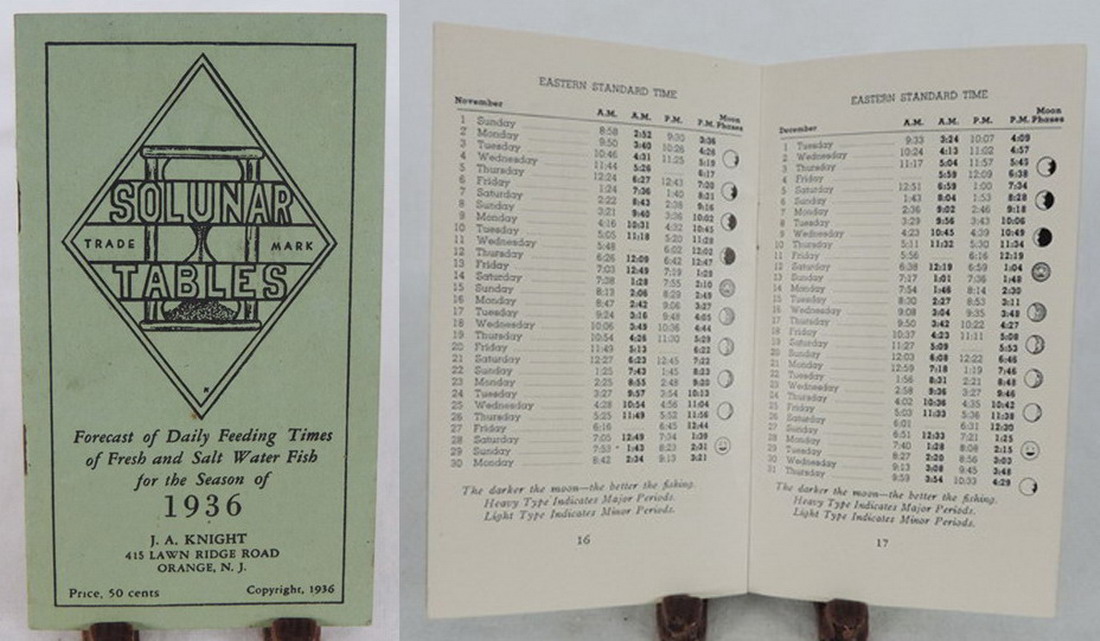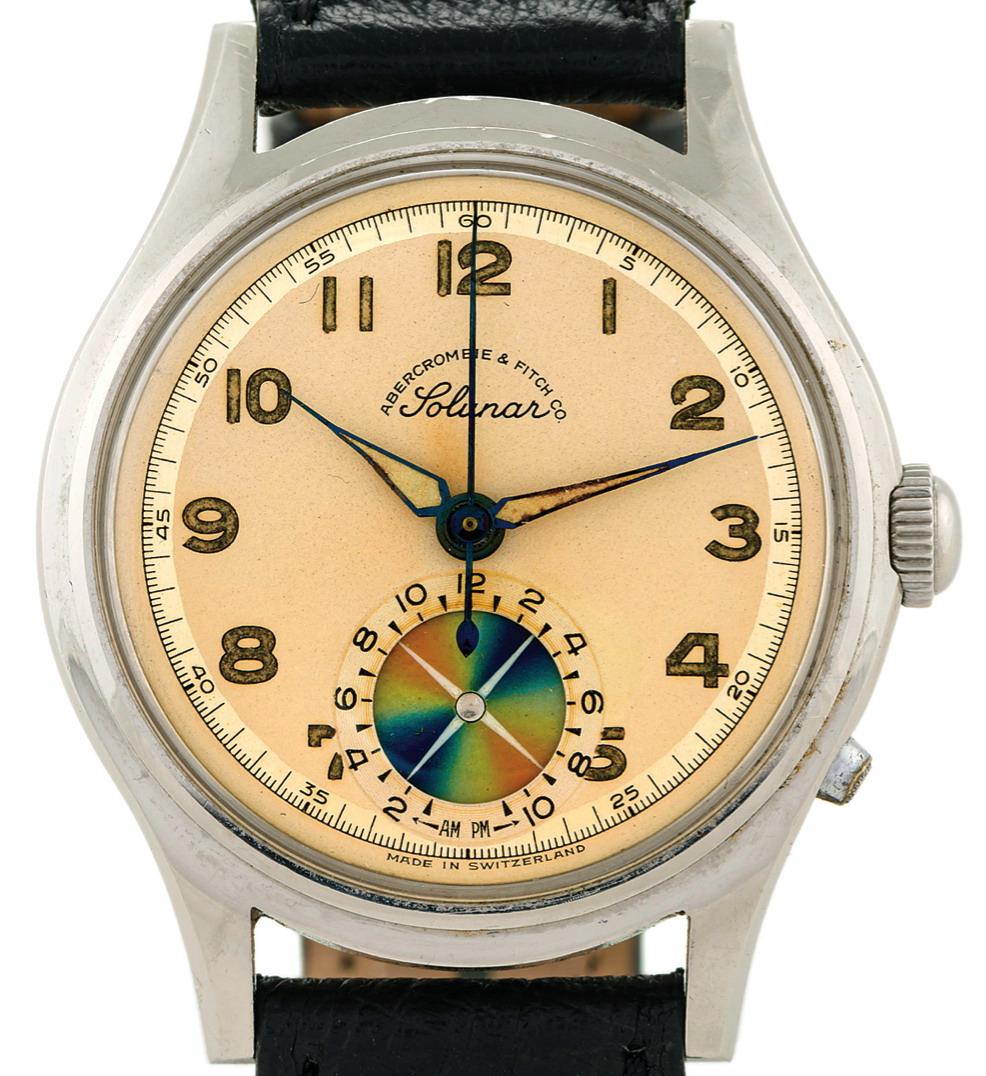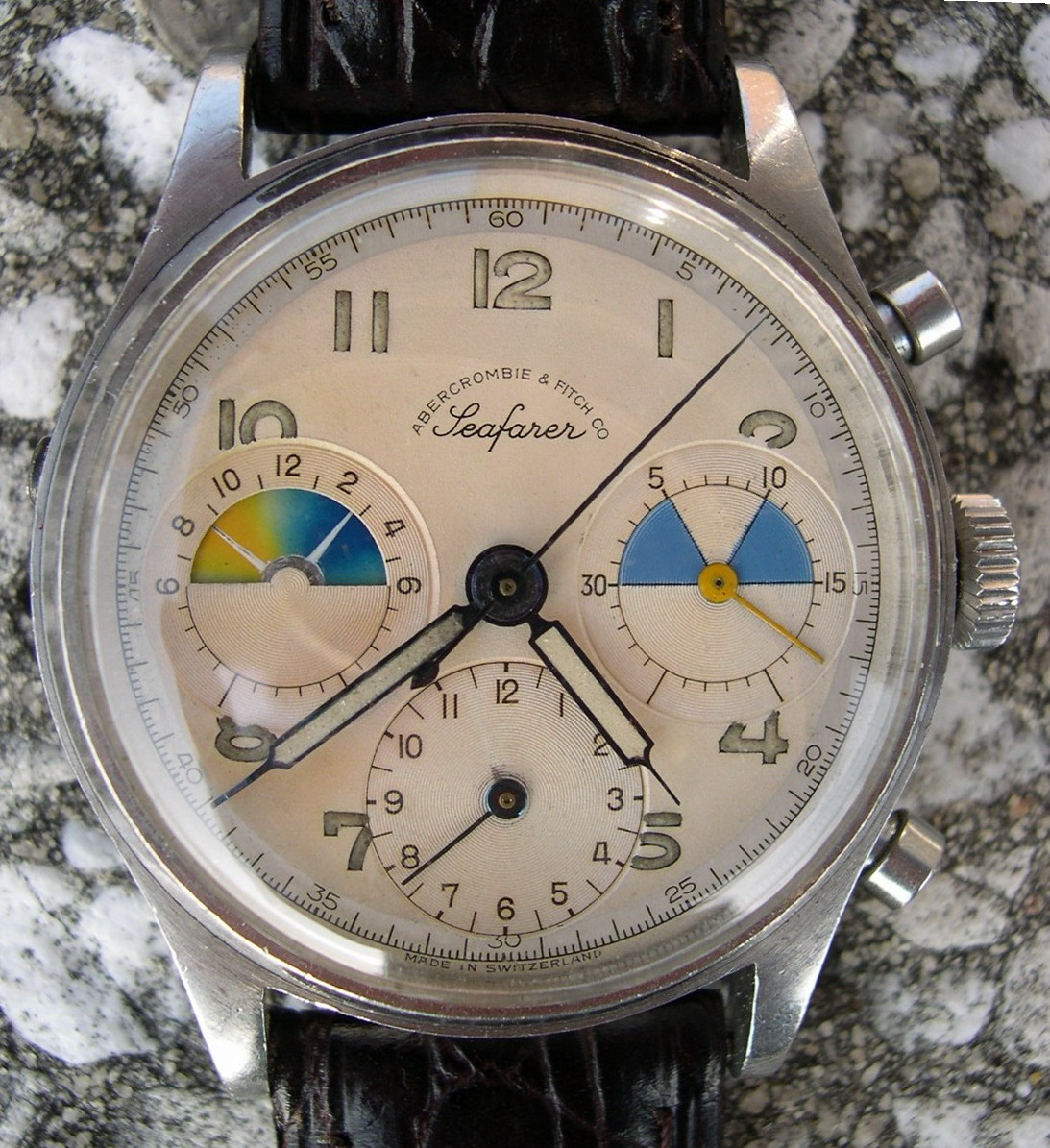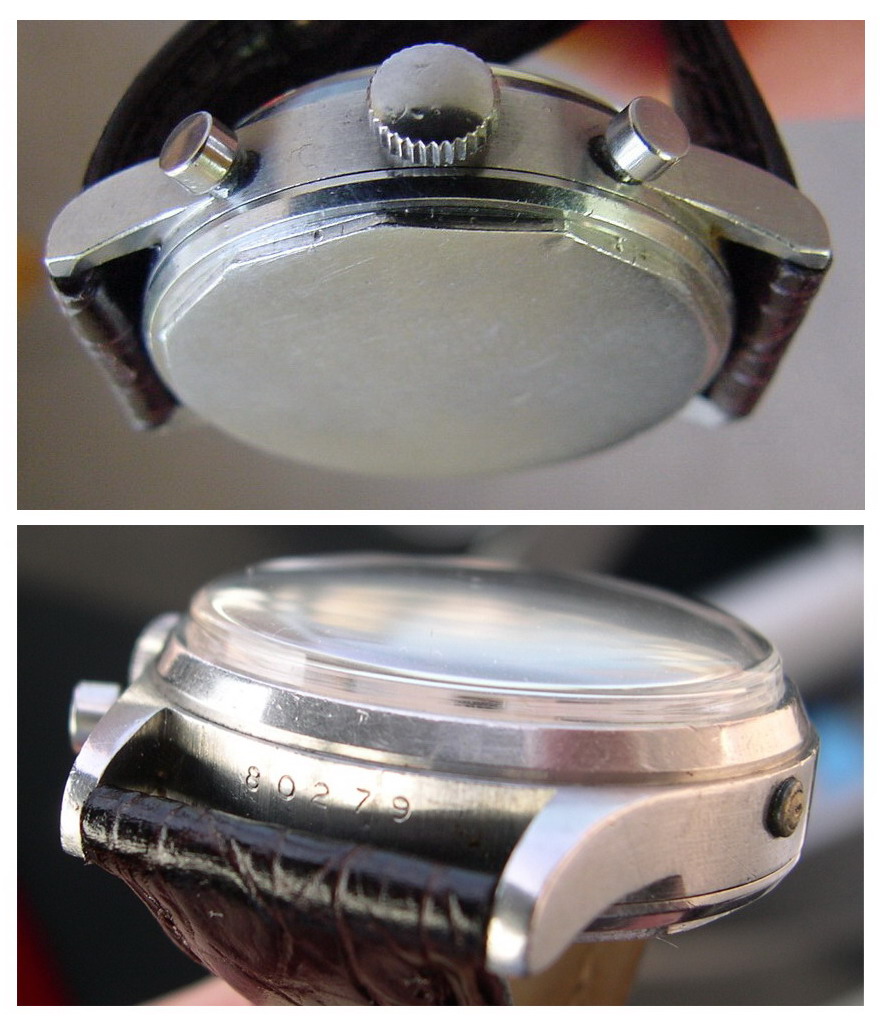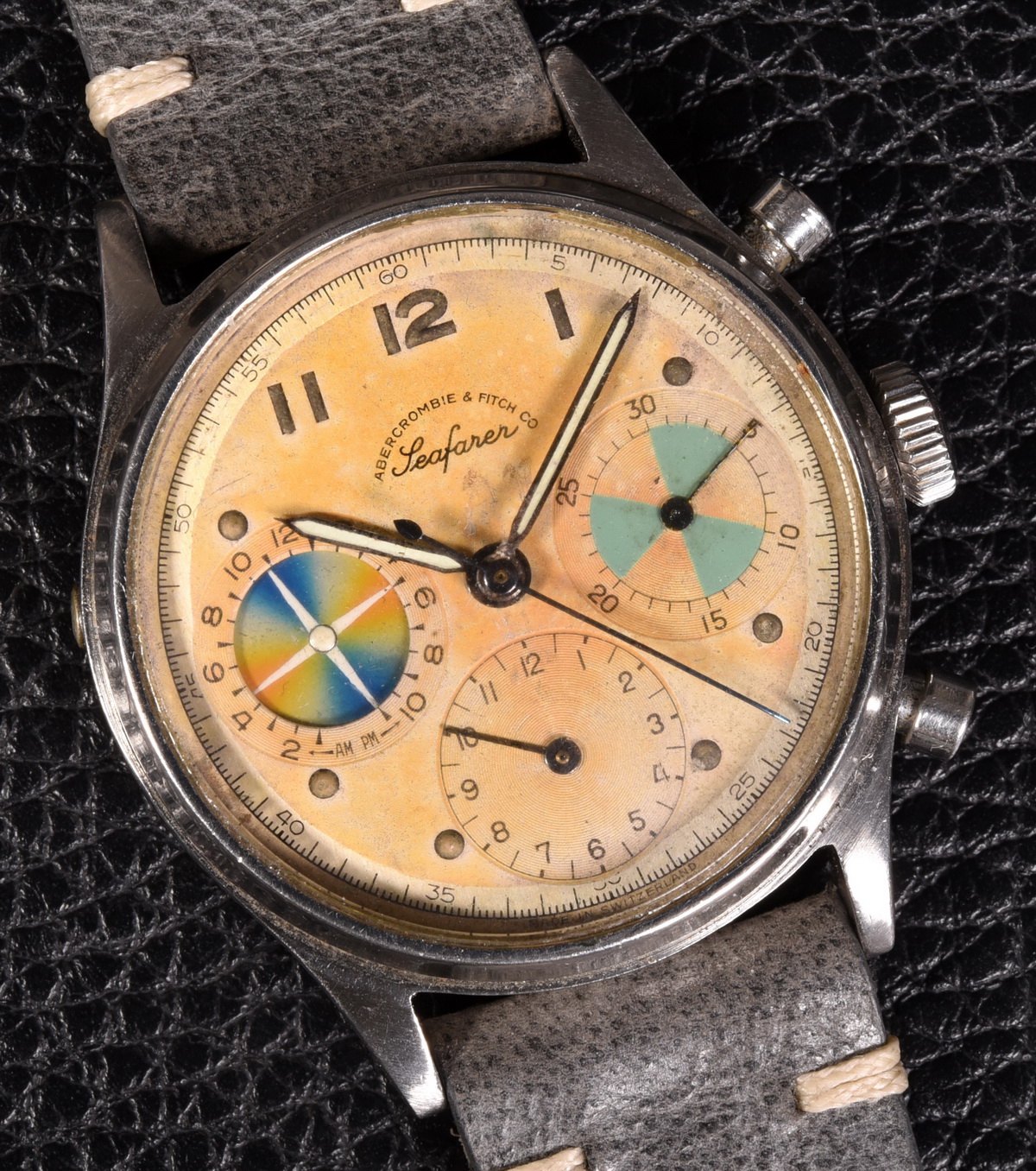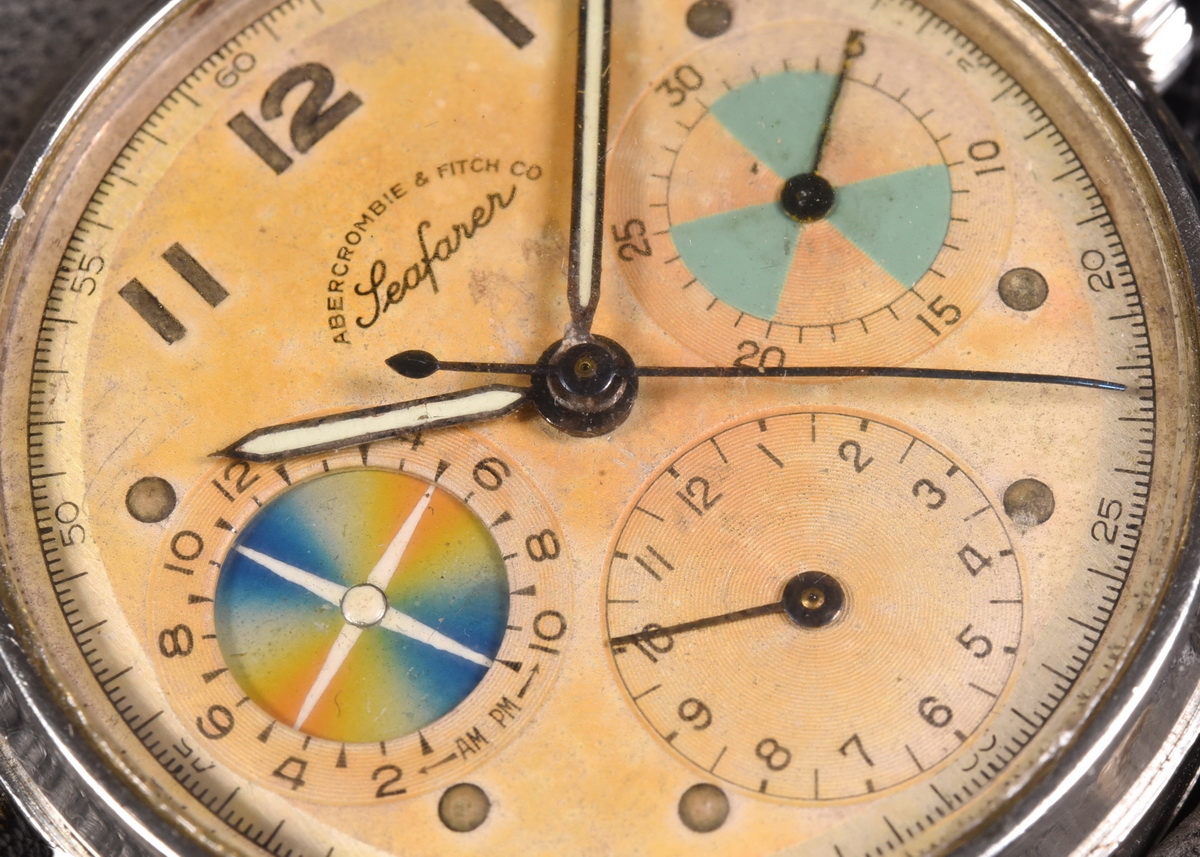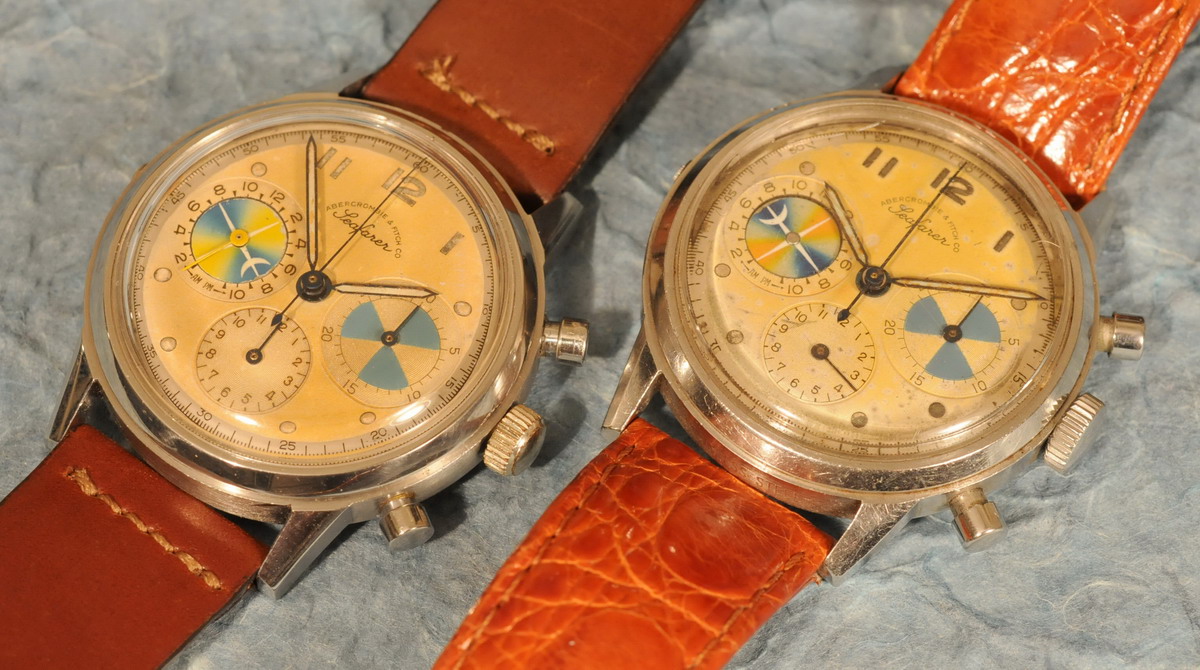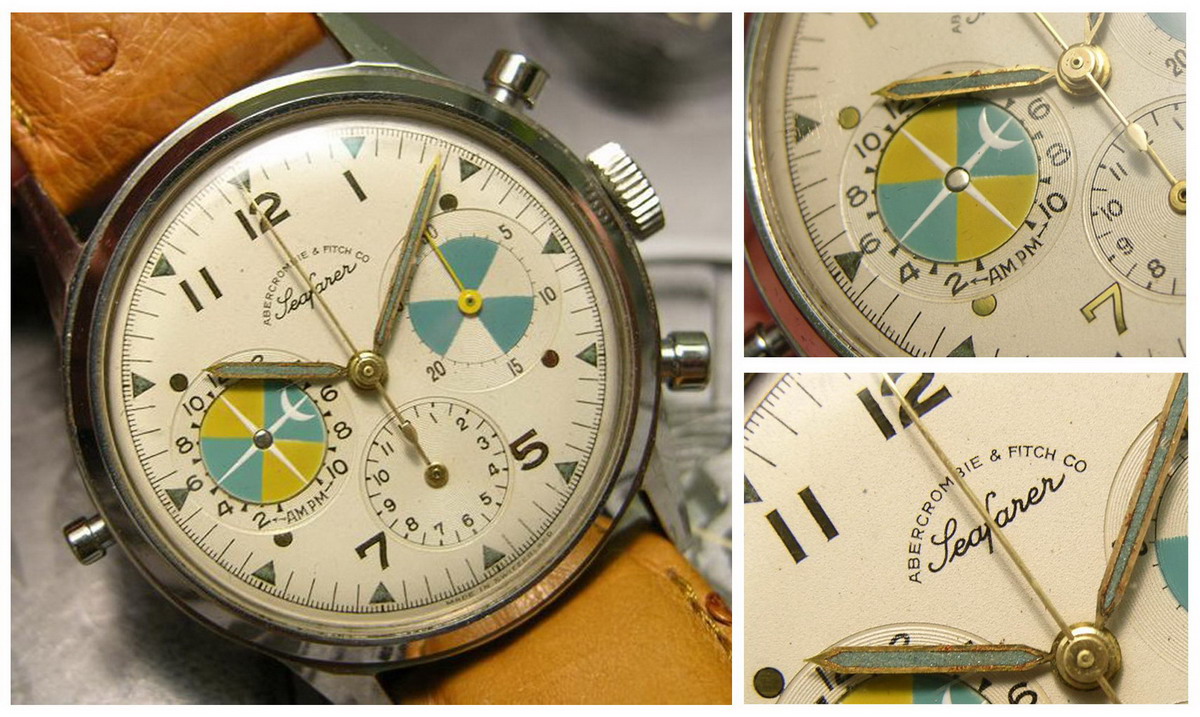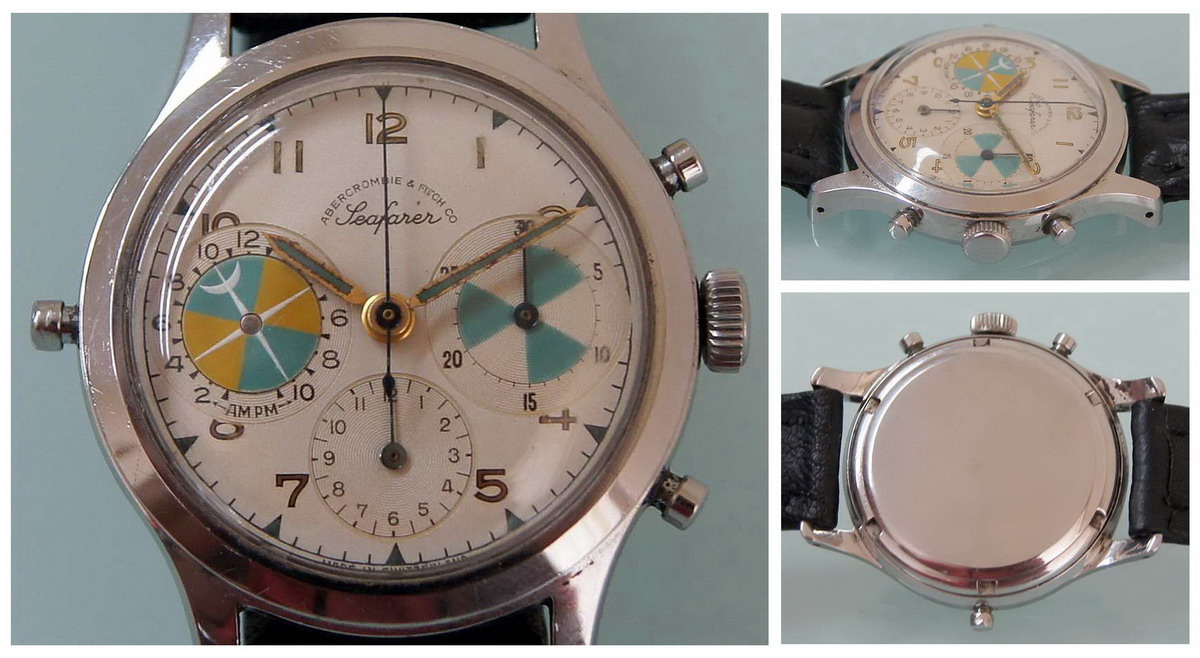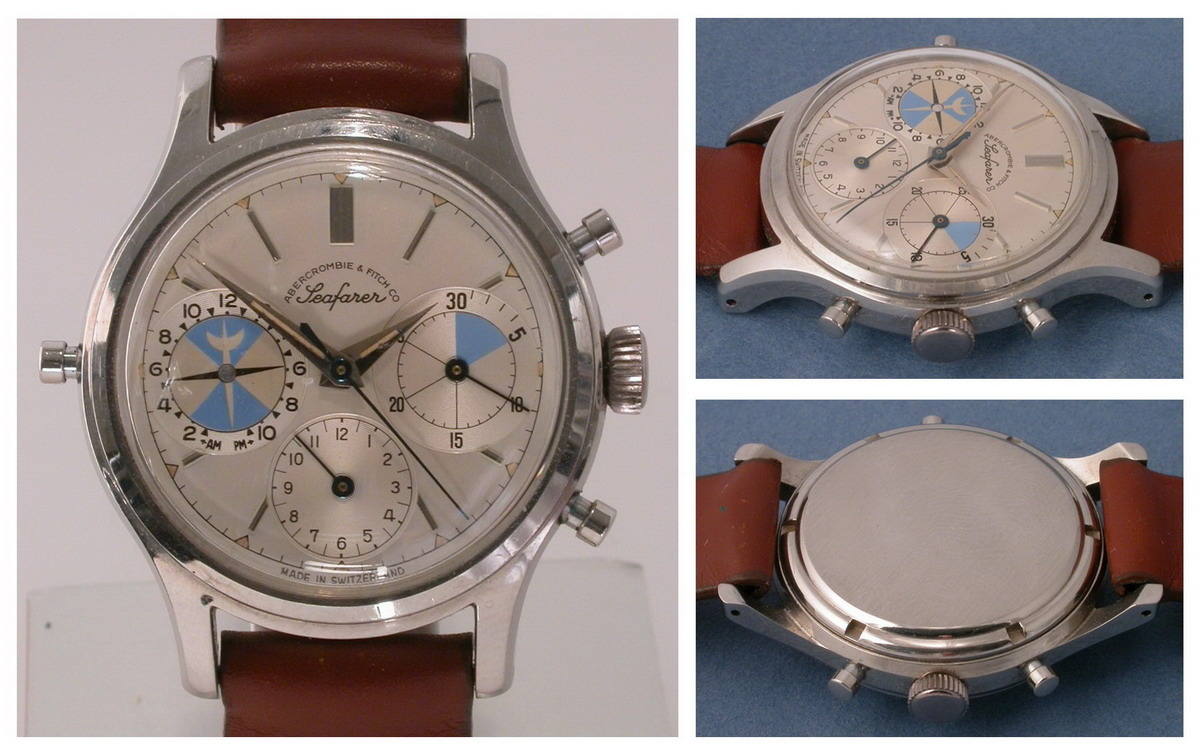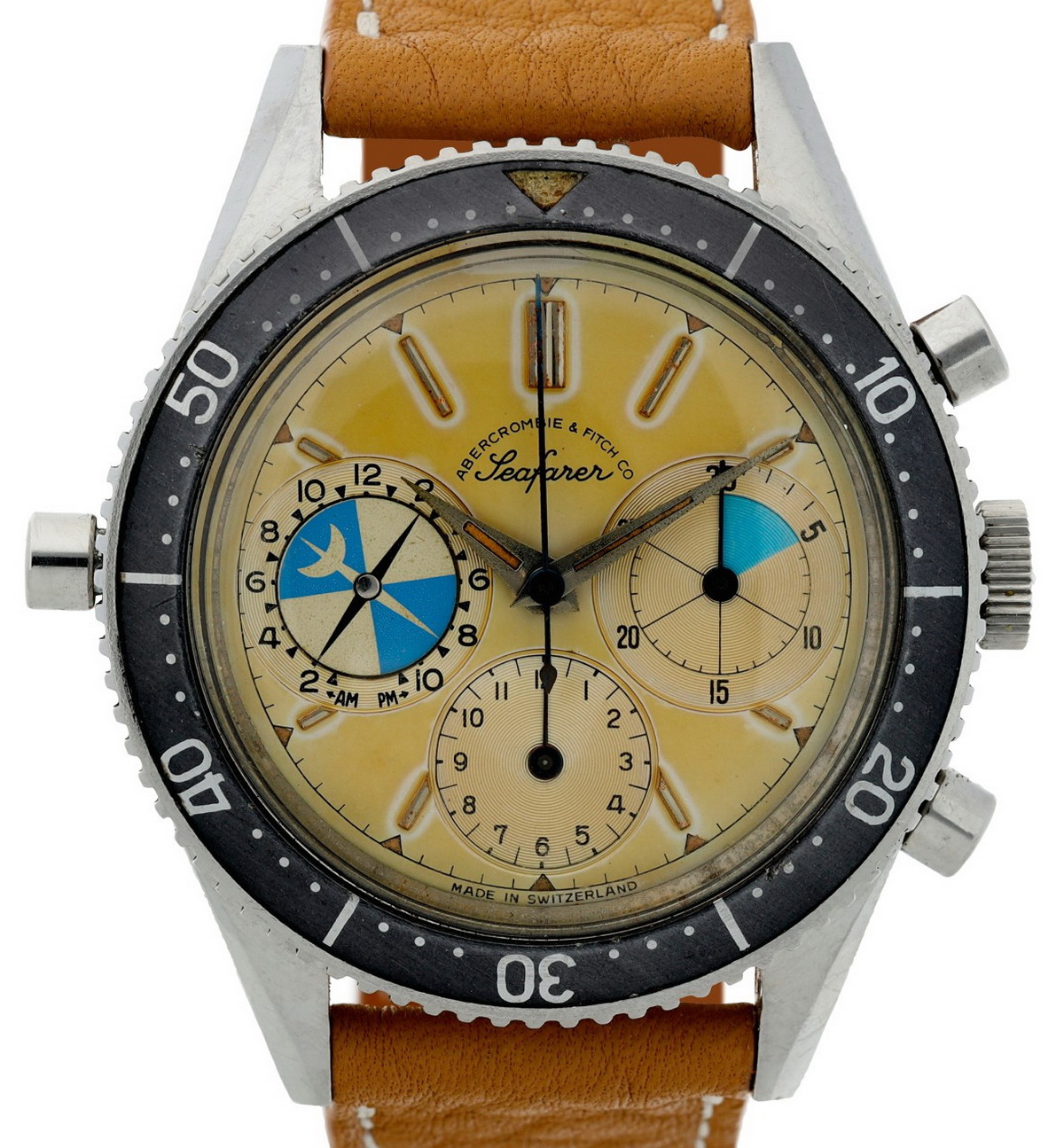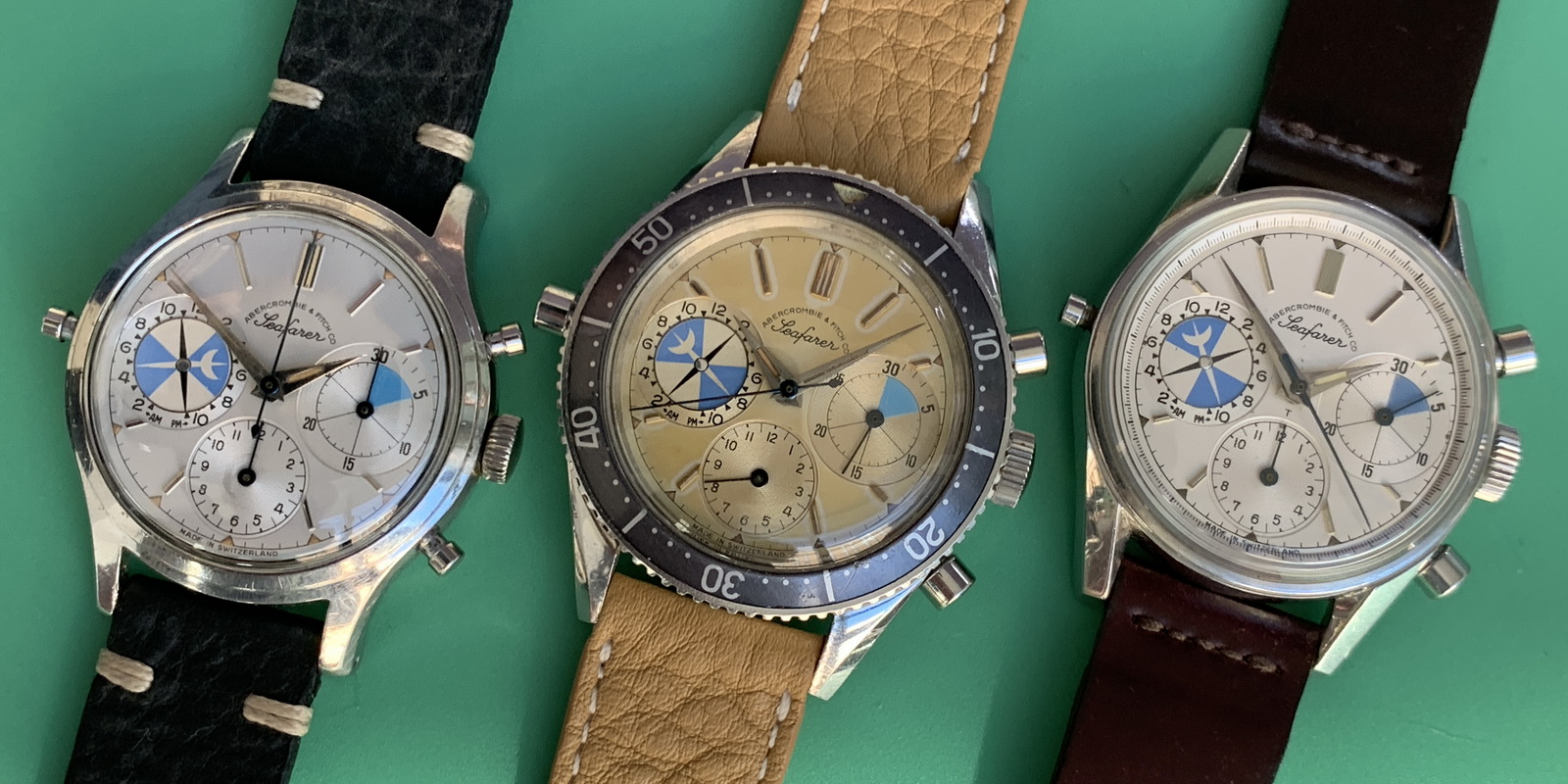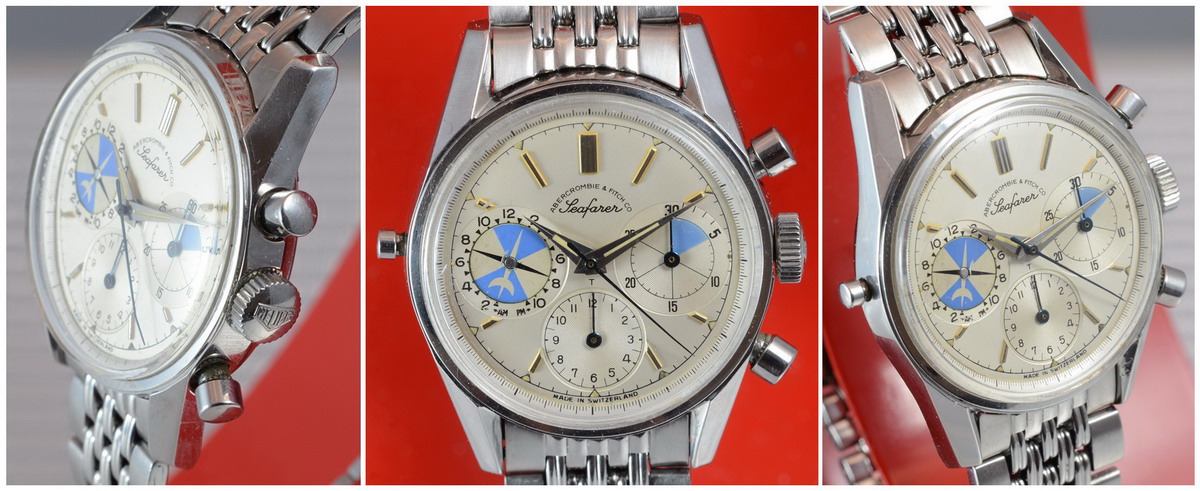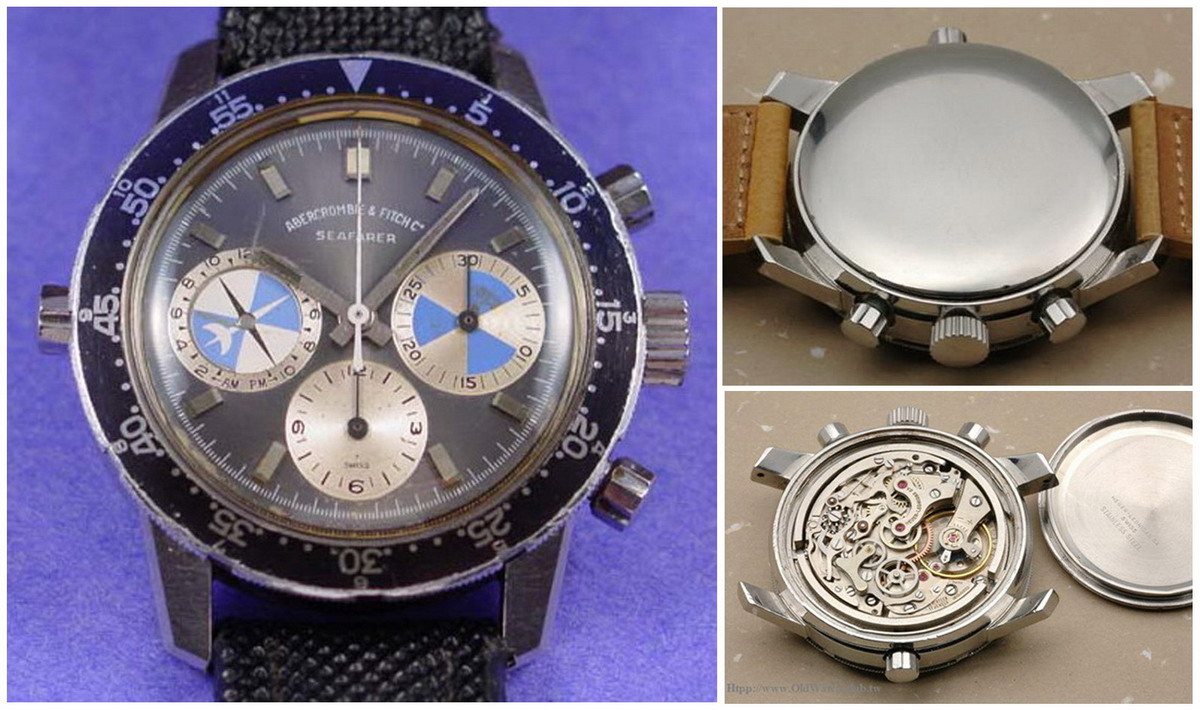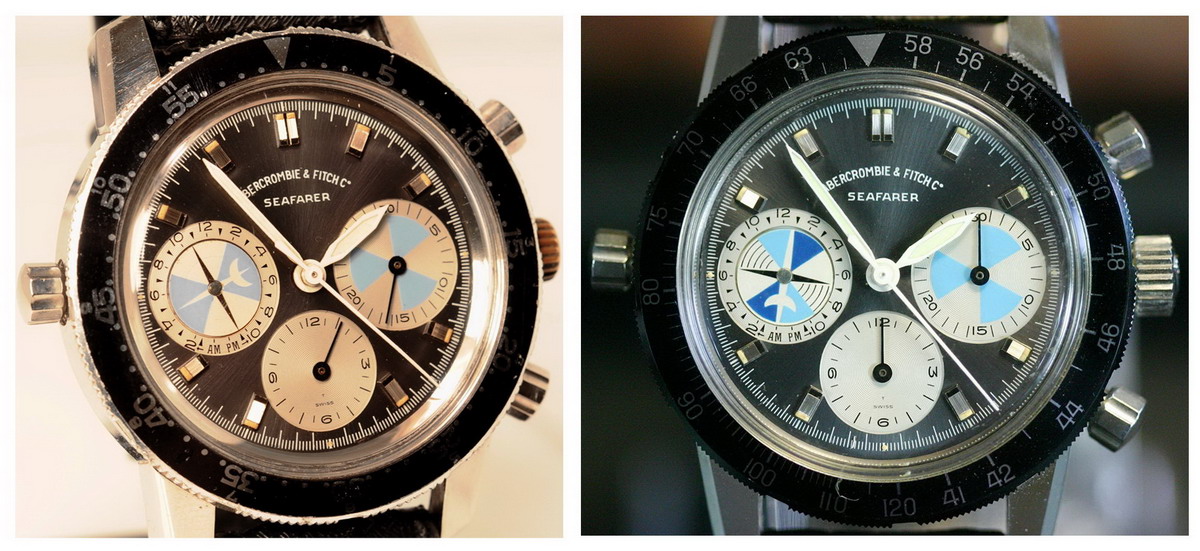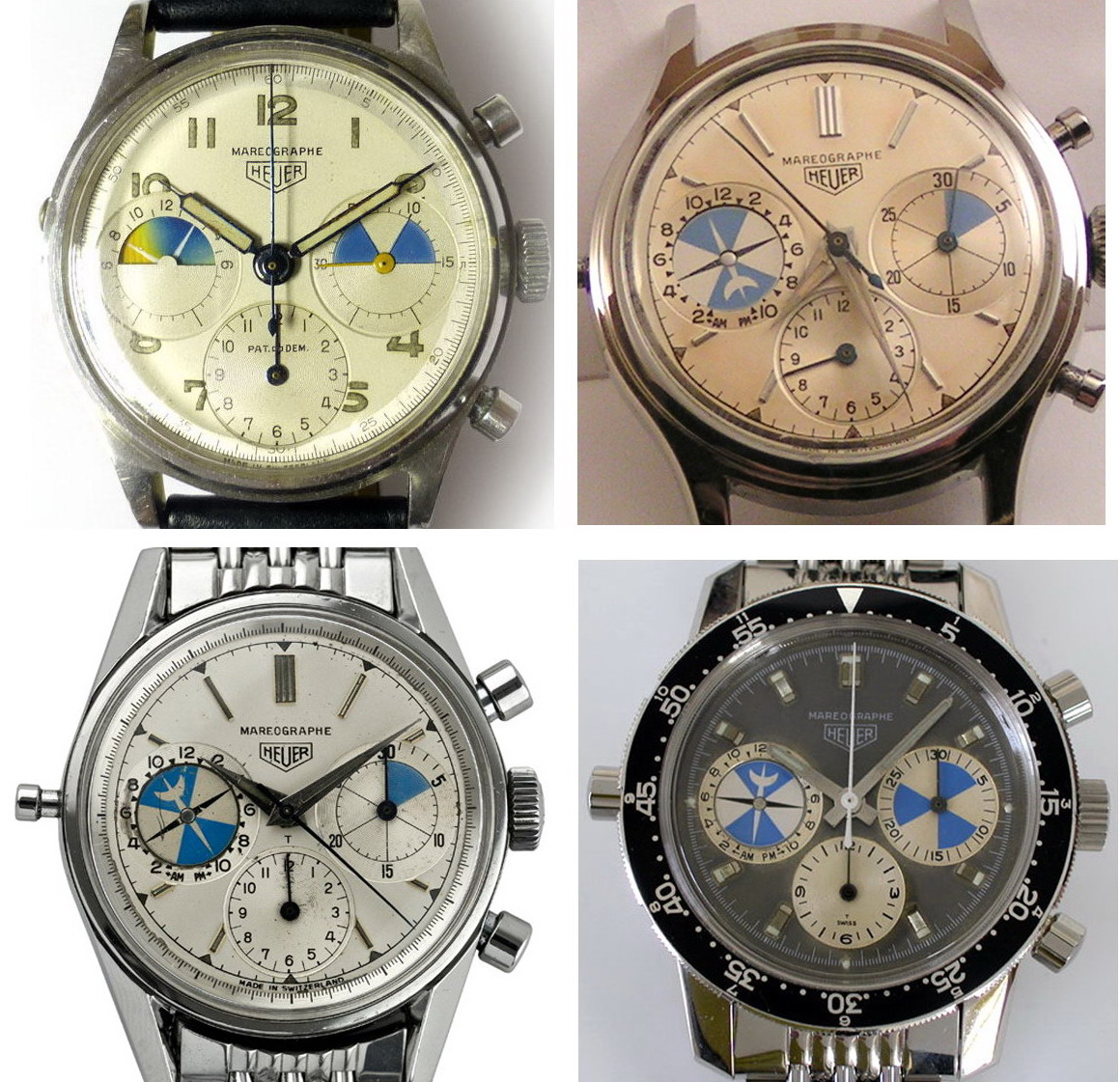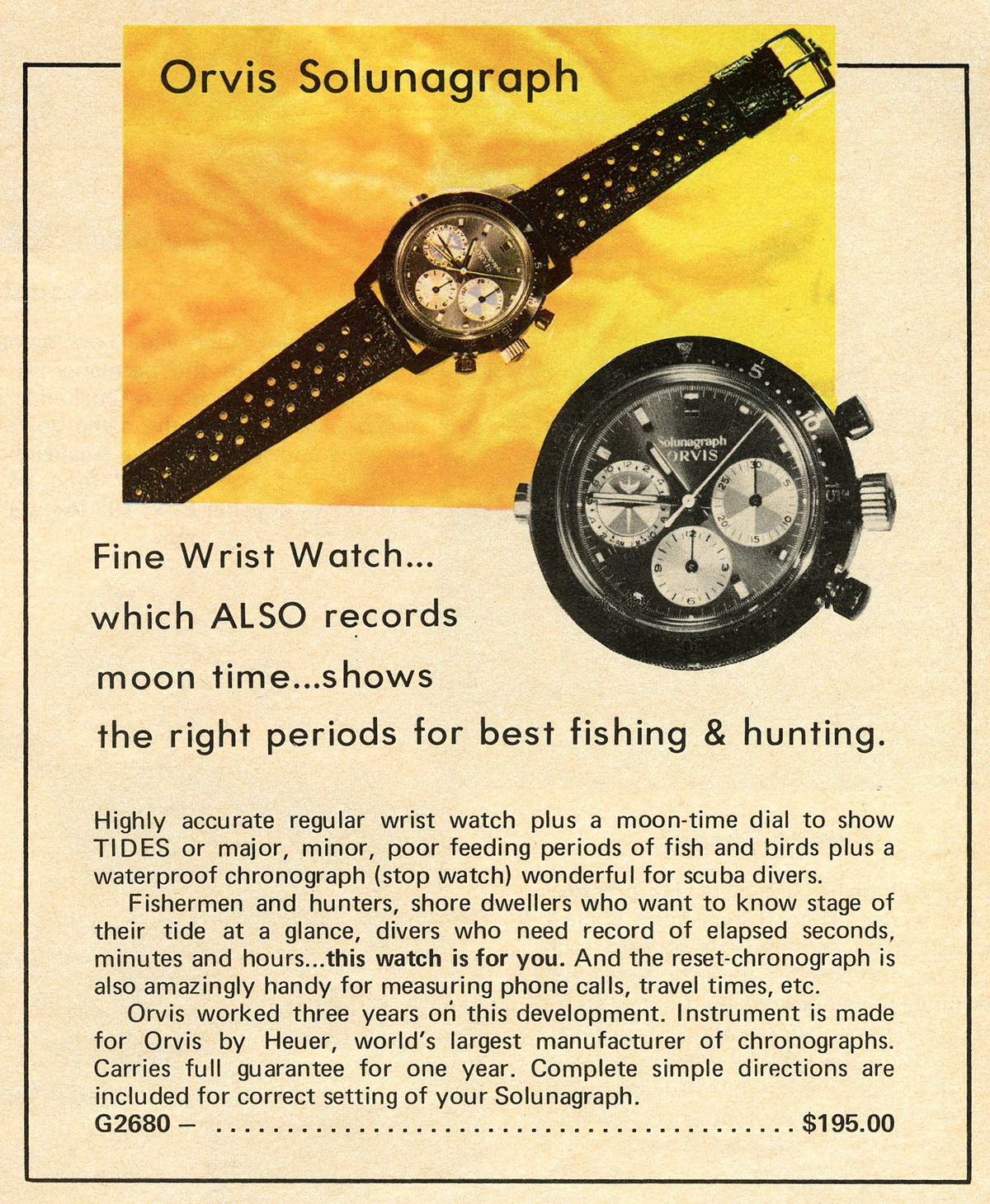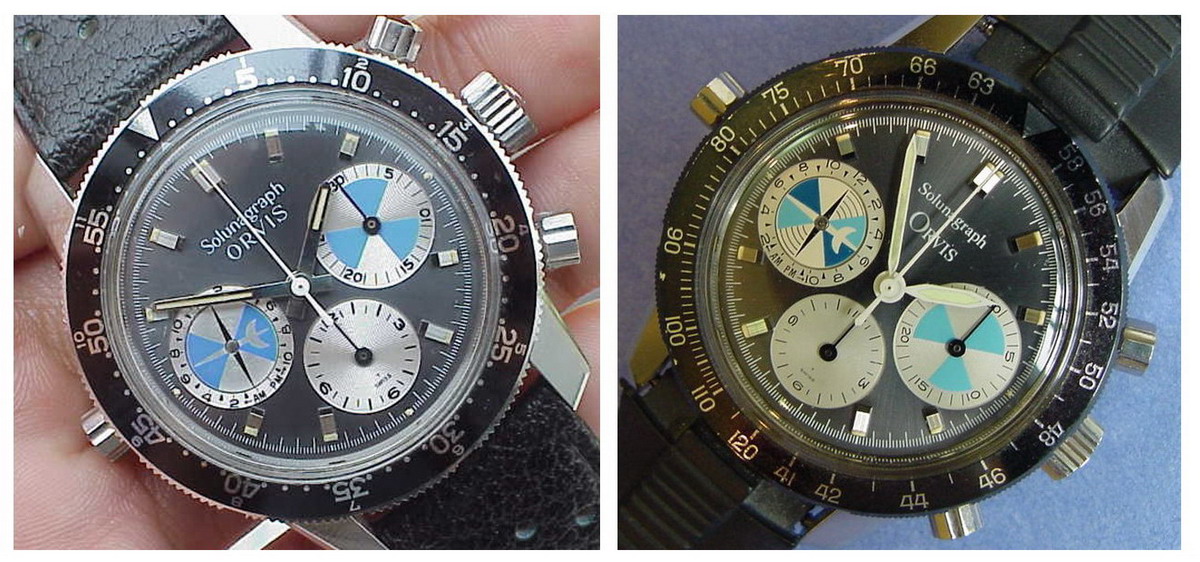It’s Summertime . . . Seafarer Season
The world of vintage watch collecting is marked by relatively few “seasonal” trends, but as surely as the dark skies of winter will turn to the blue of summer, vintage Heuer collectors will observe an increased interest in a certain series of watches. The watch is the Abercrombie & Fitch Seafarer, manufactured by Heuer for A & F on a private-label basis from the early 1950s into the 1970s, and also sold under the Heuer “Mareographe” and Orvis “Solunagraph” names. (We will generally refer to all these chronographs as “Seafarers”, as the Abercrombie versions were produced in the highest quantities.)
With its special dial to show the times of the high and low tides, vivid colors and stout case, the Seafarer is the perfect vintage Heuer chronograph for the beach.
Origins of the Seafarer
Understanding Abercrombie & Fitch
To understand the Seafarer, we start with Abercrombie & Fitch. In his profile of the company, Jake Gallagher notes that long before Abercrombie & Fitch became a “shameful mall brand”, it was a company that “outfitted presidents and pioneers, authors and actors, explorers and icons.”
Abercrombie & Fitch began in 1892, operating a small waterfront shop in Lower Manhattan, under the name “David T. Abercrombie Co.” Ezra Fitch became a partner in 1900, and the store soon moved further north, to 314 Broadway. David Abercrombie and Ezra Fitch had different visions for the company, with the innovative Mr. Fitch determined to bring his love of the outdoors to the general public by creating a store that would provide a unique and enjoyable destination for anyone who might love adventures (or the latest gadgets).
Abercrombie & Fitch offered top-quality gear for hunting, fishing, camping, safaris, climbing, driving, flying and other outings, calling itself “Greatest Sporting Goods Store in the World”. Copy from a 1919 advertisement captures the essence of the brand:
“Riding to hounds or driving off the first tee, journeying by sleeper and palatial steamer to Hong Kong or exploring in Tibet, shooting in Maine or motoring on a grand tour, Abercrombie & Fitch clothes long since came to be internationally accepted standards”
Abercrombie & Fitch was very successful, its list of customers being a “Who’s Who” of adventurers and romantic figures. One history of Abercrombie & Fitch states:
“Abercrombie & Fitch outfitted many great hunting and exploration expeditions, like Theodore Roosevelt’s trips to Africa and the Amazon and Robert Peary’s expedition to the North Pole. Ernest Hemingway bought his guns there. Presidents Hoover and Einsenhower relied on A&F for the best fishing equipment. Other famous clients included Amelia Earhart, Presidents Taft, Harding and Kennedy, the Duke of Windsor, Bing Crosby, Howard Hughes, Katharine Hepburn, Greta Garbo and Clark Gable. And there was more: Cole Porter ordered his evening clothes from Abercrombie & Fitch. During Prohibition, A&F was the place to buy hip flasks.”
During the 1950s, Abercrombie & Fitch had only two stores. The flagship store occupied 12 floors on Madison Avenue at 45th Street, in New York City, and the company also owned the Von Lengerke & Antoine store, on North Wabash in Chicago. Gallagher notes that the Madison Avenue store featured a shooting range, a resident golf pro, and a pool large enough to use for fly-fishing lessons. The Mezzanine of the Madison Avenue store offered prints and paintings, primarily focused on sporting subjects, as well as the latest fiction, non-fiction, and rare and out-of-print books.
Abercrombie & Fitch published an annual catalog of over 400 pages, as well as smaller booklets that presented clothing and gear for particular pastimes (such as hunting, fishing or camping). Other booklets focused on specific themes — merchandise for the summer vacations or Christmas gifts, or prints and paintings that might be of interest to the sportsman.
These catalogs and brochures show a balance between essential gear for the sportsman, and gadgets and novelties that seem to be intended for the “man who has everything” (and also an abundance money).
“In addition to the more standard types of outdoor goods, A&F had a selection of exotic sporting equipment that would make the imagination reel: hot air balloons, yachting pennants, portable trampolines, treadmills for exercising dogs, throwing knives, shirts of chainmail, leopard collars, and everything a person could possibly need for falconry.”
The Abercrombie / Heuer Relationship
Consistent with its theme of outfitting adventurers, Abercrombie & Fitch offered a line of watches characterized by their rugged design and innovative features. While sportsmen might enjoy sturdy chronographs, other customers might enjoy watches with alarms, watches that display a second time-zone, dive watches, super thin watches or watches with a hidden crown.
Heuer began producing watches for Abercrombie & Fitch, in the mid-1940s. Jack Heuer recalls that Walter Haynes, then President of Abercrombie & Fitch, would visit Ed. Heuer & Co. in Switzerland twice each year, to consider new types of watches that might be of interest to sportsmen. Abercrombie’s flagship store in new York City had a watch department, with an in-house watchmaker to service the watches that it sold. On his first visit to the United States, at age 23, Jack Heuer worked as an apprentice at A &F’s New York City store, working as a salesman — in the watch department, of course.
The chronographs that Heuer produced for Abercrombie & Fitch were typically Heuer’s higher-end models — three register chronographs in rugged, waterproof cases.
In addition to chronographs, Heuer manufactured watches for Abercrombie & Fitch with special features, such as an alarm or indication of a second time-zone.
Solunar Theory for Fishing and Hunting
In the late 1940s, Abercrombie called on Heuer to produce a unique watch for hunters, fisherman and sailors, the “Solunar”. This watch would be based on the “solunar theory”, advocated by John Alden Knight, in the 1930s.
The solunar theory suggests that sportsmen can determine the best times of the month and the best times of day to hunt and fish, based on the positions of the sun and the moon (and in the case of fishing, the tides). As Knight stated in his book Moon Up, Moon Down:
“Other conditions not being unfavorable, fish will feed, animals will move about, birds will sing and fly from place to place, in fact, all living things will become more active, more alive, during Solunar periods than at other times of apparent equal value. Those anglers who have had the breadth of vision to follow the schedule, have found that it is a guide to the best fishing of each day, and the quality of their sport has improved.”
Commencing in 1936, John Alden Knight published charts each year, showing the days of the month and the times each day that are favorable for hunting and fishing. For many sportsmen, these charts were the bible, as they firmly believed that the charts contributed to their success.
Solunar theory is alive and well in 2014, having moved from paper charts and almanacs to smart phones, GPS devices and the internet. The chart below, showing June 2014 solunar information for St. Simons Island, Georgia, was generated on the SolunarForecast.com website, and provides a good visual representation of the solunar theory. Notice that the chart shows the best days of the month for fishing and hunting (with the gold bars), as well as the best and worst times each day.
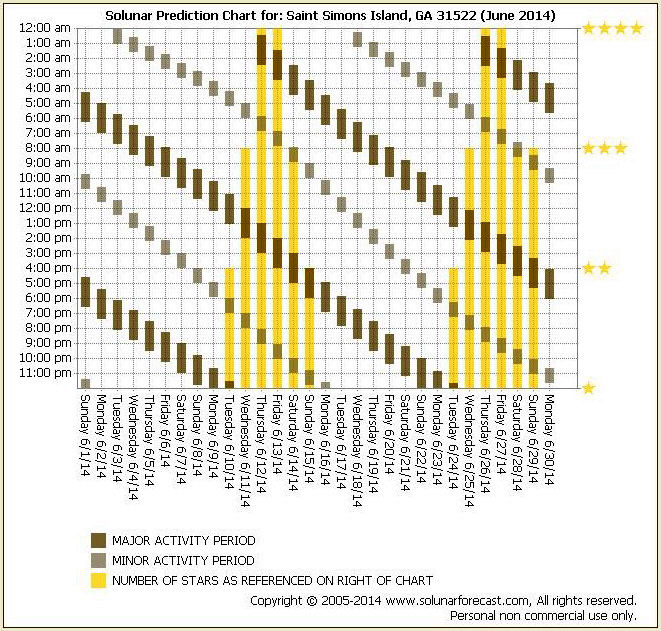
The Solunar Watch
Developing a watch that would provide solunar information was a challenge for Heuer. As Jack Heuer has noted, Switzerland is not on an ocean, and members of his family and the company’s watchmakers were not familiar with the cycles of the tides. In his autobiography, The Times of My Life, Jack Heuer reports that, at age 15, he made his first contribution to the “family business” and had a role in the creation of his first watch, when his father, Charles-Edouard Heuer, told him that Abercrombie & Fitch had asked the company to create a watch that have a solunar display. Jack Heuer reports that he collaborated with his high school physics teacher to calculate the wheels and cogs needed to show the times of the tides at a specific location. As it turns out, the tide dial makes one full rotation every 59 days, twice the duration of the 29-1/2 day lunar cycle.
The Solunar watch incorporated a colorful dial that rotated once per day to indicate the times for the high and low tides.
Once set for a specific location (by a pusher at nine o’clock), the dial inched forward at around midnight to display the times for the high and low tides for the following day. Reading the tide dial is simple: The white lines in the deep blue segments of the tide dial point to the times for the high tides (when we will see more water) and the white lines in the sand colored segments point to the times for the low tides (when we will see more sand). In marketing the Solunar watch, Heuer pointed out that Solunar information could also be useful in hunting.
The following is an article introducing the Solunar watch —
The following booklet describes the Solunar watch and provides instructions for its use —
The Solunar was unique, the Solunar was colorful, but — in the end — the Solunar was a commercial failure. The hunters and fisherman were committed to their charts, and there were not enough adventurers needing see the times of the tides or the ideal times for hunting on their wristwatches
[Click HERE to visit the OnTheDash galleries of Solunar watches.]
From Solunar to Seafarer
Rather than giving up on the Solunar, Abercrombie decided to make it a more useful timepiece by combining the solunar dial with one of the adventurer’s ultimate tools, the three-register chronograph (with 12-hour capacity). The transformation from tide watch to tide chronograph was relatively simple for the designer, replacing the “running seconds” register of a three-register chronograph (located at 9 o’clock) with the tide dial.
Understanding the Tide Dial
At any specific location, the elapsed time between high tides and between low tides will be approximately 12 hours and 25 minutes. So if the high tide is 7:35 in the morning, the next high tide will be at 8:00 that night, the next one after that at 8:25 the following morning, and the next one at 8:50 the following evening. (The corresponding low tides will be approximately six hours after each of the high tides.)
For any given day, the tide dial on the Solunar or Seafarer indicates two high tides and two low tides. The user of the watch sets the time-of-day (as on any normal watch), which Abercrombie called the “Solar Time”. The user then sets the tide dial (which Abercrombie called the “Lunar Dial”) by consulting the local tide tables and using the pusher (on the left side of the case) to advance the tide dial, until the tide markers point to the proper times. The four pointers on the tide dial will now show the four tides for the day, two high tides and two low tides. At around midnight, the tide dial will automatically advance, to indicate the four tide times for the following day. For details, see the Operating Instructions for A&F Lunar Time Watches.
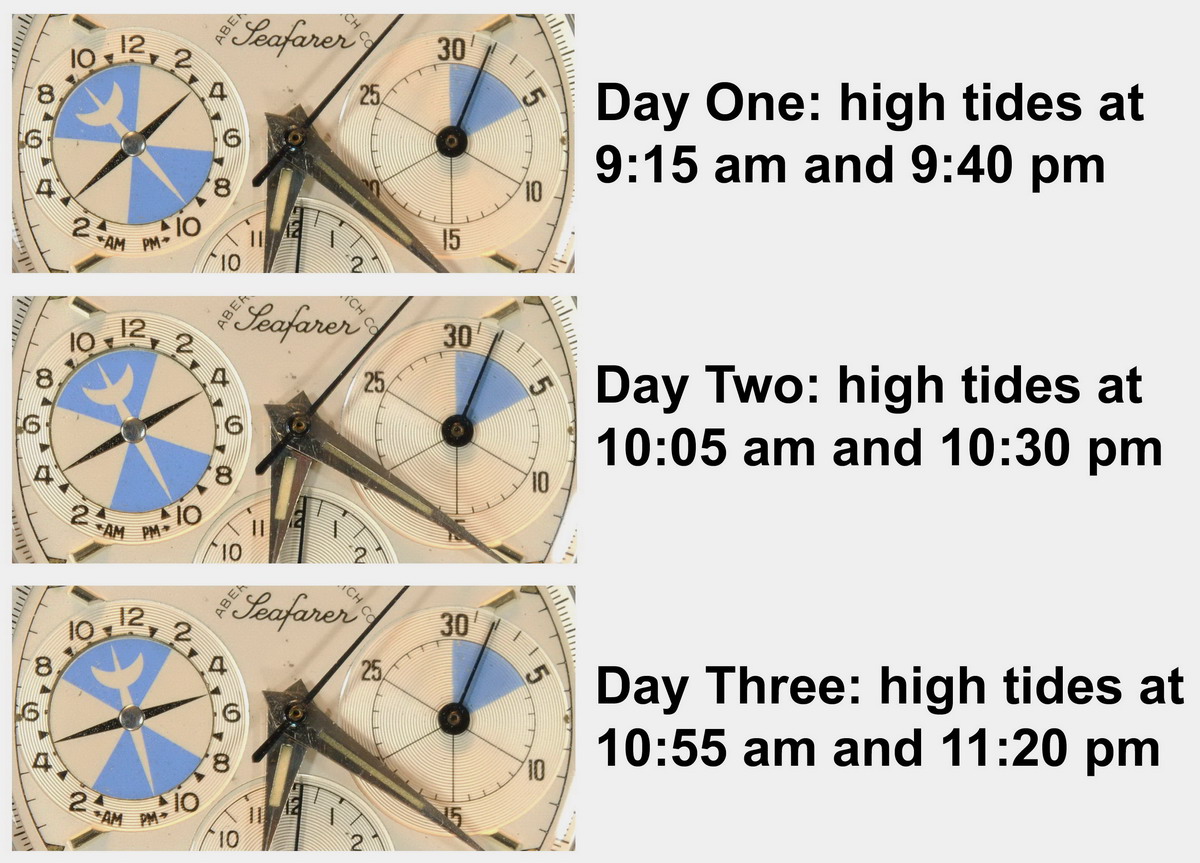
The image above shows how someone spending a weekend at the beach might use his Seafarer to track the high and low tides. He wakes up on Friday morning (Day One), checks the tide tables for his location, and sees that the first high tide of the day will be at 9:15 in the morning. He uses the pusher on the left side of the case to set the high tide indicator (the white marker in the blue segment) to approximately 9:15 am; he sees that Friday’s second high tide will occur at approximately 9:40 that evening. When he wakes up on Saturday morning (Day Two), the tide dial has advanced overnight, and shows him that the high tides on Saturday will occur at 10:05 in the morning and at 10:30 in the evening. Finally, when he wakes up on Sunday morning (Day Three), he sees that the high tides on Sunday will occur at 10:55 in the morning and at 11:20 in the evening.
Of course, for each of the three days, the black markers in the white segments will point to the times of the low tides..
The Seafarer Movements
After determining that a three register chronograph with a tide / moon dial would be useful for sportsmen, Heuer faced the question of how to build the chronograph with this complication. Once the dial had been drawn and the math had been solved, development of the movement to power this new chronograph was relatively simple.
Since the early 1940s, Heuer had been using the Valjoux 72C movement to power its triple calendar, three register chronographs. (Heuer also offered a selection of triple calendar watches, which did not have a chronograph.) The triple calendar requires that two wheels move forward each night, at around midnight, with the disc for the days making a full rotation every seven days and the hand pointing to the date making a full rotation every 31 days. Using the same type of mechanism to advance the tide dial over a 59 day cycle was relatively simple. It was primarily the physical location of the tide dial (being in the nine-o’clock position) and the number of teeth in the gears that had to be changed from the Valjoux 72C movement.
We may wonder why the first Seafarers used the Valjoux 71 movement, rather than the Valjoux 72 movement (which had already been adapted for a triple calendar Valjoux 72C). First, at this time, the Valjoux 71 was Heuer’s workhorse three register chronograph movement, with the Valjuox 72 being introduced relatively recently. Second, it seems plausible that the larger size of the Valjoux 71 movement was more appealing to Abercrombie & Fitch, given its style of larger “bulletproof” cases.
Ten Versions of the Seafarer
The First Seafarers — Reference 346
In the very first version of the Seafarer, Heuer employed a unique display for the tide dial, with the colorful tide disc visible through a 180 degree cut-out at nine o’clock. All three recorders are oversized, covering most of the available real estate of the dial. The chronograph minute recorder (at three o’clock) featured two blue segments, one marking the minutes 0 through 5 and the other marking 10 to 15 minutes. Marking these five-minute segments made the Seafarer useful for the 15 minute countdown to the start of a yacht race. The mustard colored needle (indicating chronograph minutes) matches the tone of the tide dial.
The very first version of the Seafarer was housed in the case that Heuer used for its Reference 346 chronographs. This was a large case, at 37.5 millimeters across the dial and 45 millimeters lug-to-lug, with a 12-sided screw-back and large waterproof pushers.
It seems that Heuer moved from this first version of the Reference 346 Seafarer to the second version fairly quickly, making the first version one of the rarest Seafarers. [Click HERE to see additional photos of the first version of the Seafarer.]
The second execution of the Seafarer continued to be housed in the Reference 346 case, but the dial and hands have been redesigned.
The window for the tide disc is now a full circle (360 degrees), the minute recorder features three blue slices (alternating with three white ones), and 11, 12 and 1 are the only numerals on the dial. Distinctive pencil-shaped hands replaced the previous “military” style hands.
[Click HERE to see additional photos of the second execution Seafarer, in the Reference 346 case.]
Reference 2443 Seafarer
As Heuer began to replace the Valjoux 71 movement with the smaller Valjoux 72, it replaced the Seafarer’s Reference 346 case with the slightly smaller Reference 2443 case. The rounded lugs of the 346 gave way to the more angular lugs of the Reference 2443, the lugs were slightly shorter, and the case was also slightly thinner.
The tide dial and minute recorder remained full size, but the hour recorder is smaller, to fit neatly between the five o’clock and seven o’clock markers. The first execution of the Reference 2443 Seafarer has a cream-colored dial, with numerals for 11-12-1 and luminous dots to mark the other hours. [Click HERE to see additional photos of the Seafarer in the first execution Reference 2443 case.]
The second execution of the Reference 2443 Seafarer (shown below) has a brighter white dial, with additional numerals for 5 and 7, and distinctive triangles to mark all 12 hours.
The blue slices on the minute recorder have become more green, consistent with the tone of the tide dial. Hands on the second execution Reference 2443 model are gold, filled with green-toned lume. [Click HERE to see additional photos of the Seafarer in the second execution Reference 2443 case.]
Reference 2444 Seafarer
The third case used for the Seafarer was Heuer’s Reference 2444 case, which – at 36 millimeters across the dial — was considerably smaller than the previous Reference 346 and 2443 cases. The case is easily identified by its curved lugs (with a bevel between the top and sides) and its smaller pushers. The 12-sided case-back is replaced with a slotted back.
The first execution Reference 2444 Seafarer continued the general color scheme of the previous models, This version has the green / yellow palette for the tide dial, numerals for the hours, and the gold-edged hands with green lume. [Click HERE to see additional photos of the Seafarer in the first execution Reference 2444 case.]
Mid-way through the production of the 2444 Seafarers, however, Heuer gave the Seafarer a major overhaul. The case remained the same, but the yellow / green tones of the previous Seafarers are replaced with a silver-toned dial; the greens and blues of the tide dial and minute recorder are now a vivid “sky blue”; and bright steel markers replace the numerals and lume.
The distinctive pencil hands – used on the Seafarers, but not on the comparable Heuer chronographs – yield to polished dauphine hands, with luminous inserts. [Click HERE to see additional photos of the Seafarer in the second execution Reference 2444 case.]
In its dimensions and its overall appearance, with the introduction of this model, the Seafarer had gone from the bulletproof look of the first Reference 346 cases, to a watch the stood somewhere between delicate and dressy. The cream and green earthtones have also yielded to this bright silver and blue. This new look would stay with the Seafarer for several years, residing in the Reference 2446 and 2447 cases.
Reference 2446 Seafarer
Heuer introduced the Autavia chronograph in 1962, and this rugged screw-back case (Reference 2446) provided the perfect home for the Seafarer. The Autavia was waterproof to 330 feet and featured a rotating bezel, with inserts marked for either minutes or hours. For the Seafarer, the silver / blue dial and dauphine hands were carried forward from the previous Reference 2444 model.
Serial numbers on the Reference 2446 Seafarer cases suggest that the Seafarer moved into the Autavia case soon after the Autavia was introduced, in 1962/63. If the Seafarer was an itinerant chronograph, however, moving from one Heuer case to the next, but never having a case of its own, the Seafarer’s stay in this Autavia case was the briefest of all. Accordingly, this is the rarest version of the Seafarer, as our community has seen only a couple of samples of this execution.
[Click HERE to see additional photos of the second execution Reference 2446 (Screw-Back) Seafarer.]
Reference 2447 Seafarer
Heuer introduced the Carrera chronograph in mid-1963, and the distinctive Reference 2447 case – with its strong, angular lugs — offered another attractive home for the Seafarer.
The silver-white dial, with sky blue accents, and polished dauphine hands are carried forward from the previous 2444 and 2446 models. Like the Carrera, the Reference 2447 Seafarer has an inner bezel, with hash-marks for seconds and 1/5 seconds, that also serves as a tension ring to secure the crystal. Perhaps because of the excellent waterproofing qualities of this case, many of the Reference 2447 Seafarers seem to have survived in excellent condition, especially compared with the models from the 1950s in the 346, 2443 and 2444 cases. [Click HERE to see additional photos of the second execution Reference 2447 Seafarer.]
The Reference 2447 Seafarers had a relatively long run, being produced from around 1963 / 1964 until Heuer’s development of the Reference 2446C compressor case, around 1968.
Reference 2446C Seafarer
While all the Seafarers were housed in waterproof cases, Heuer’s 1968 introduction of the “compressor” case for its Autavias (Reference 2446C) – indicated as waterproof to 100 meters – offered another excellent home for the Seafarer.
This execution of the Seafarer was entirely different from the Carrera-cased Seafarer – a rotating minutes / hours bezel offered the ability to time an event apart from the chronograph; the Seafarer got its first black dial (actually a very dark gray or anthracite); and the polished steel matchstick hands of the Autavia replace the dauphine hands of the Ref 2447 model. [Click HERE to see additional photos of the first execution of the Reference 2446C Seafarer.]
With the use of the 2446C case, we can say that Heuer took the Seafarer back to its roots, to the large, “bulletproof” style of the first Seafarers.
The final version of the Seafarer remained in the Reference 2446C compressor case, but the polished steel hands (from the Autavia) are replaced with painted white hands, with larger areas of lume. This style of hands was inspired by Heuer’s Bundeswehr chronographs, and offers improved legibility over the polished steel hands.
The final version of the Abercrombie & Fitch Seafarer (shown above right) has two elements that are different from those found on previous versions. The blue area of the tide dial is divided into lighter blue and darker blue segments, and two of the white segments have a series of concentric lines, perhaps showing that the tide is rising. The bezel for the final version of the Seafarer is also distinctive, with the Minutes / Hours (MH) bezel of the earlier models being switched to a Tachymeter bezel, with the scale running from 41 to 120 units per hour. [Click HERE to see additional photos of the second execution of the Reference 2446C Seafarer.]
The journey of the Seafarer ended with the Reference 2446C case, as the model went out of production in the mid-1970s. Over the 20 year production run of the Seafarer, we saw 10 distinct executions, housed in six different cases, with a colorful array of dials and hands. So if you are a vintage watch enthusiast, looking for the perfect watch to wear on the beach vacation, the Seafarer will offer colorful choices that will look perfect as you enjoy the colors of the sky, the sea and the sand.
Heuer and Orvis Versions of the Seafarer
Heuer Mareographe
Heuer produced the Abercrombie & Fitch Seafarers over the period from 1950 into the 1970s, but collectors will want to be on the lookout for Seafarers that were sold under other names. The Heuer Mareographe was offered alongside the first executions of the Seafarer (in the Reference 346 case), and also in the Reference 2443, 2444 and 2447 cases, and finally in the Reference 2446C compressor case.
Jack Heuer has noted that Abercrombie’s Seafarer outsold Heuer’s Mareographe by a large margin, primarily because the Seafarer was designed specifically for Abercrombie & Fitch, and fit well into their line-up of watches, and because Americans were far more connected to their beaches than customers in Heuer’s major European markets. He also noted that the market for luxury items was stronger in the expanding post-War economy in the United States, than in the some of the major European markets.
Heuer Mareographes are very rare, and will typically earn a premium price over the corresponding version of the Seafarer.
Orvis Solunagraph
Abercrombie & Fitch had its origins in 1892, but Orvis is an even older retailer, founded in Vermont in 1856. Orvis is the oldest mail order company in the United States, issuing catalogs with a full line of fishing equipment and gear.
Historically, Orvis focused on gear for fly fishing, offering a full line of rods and flies, as well as clothes and gear for fly fishing. By the 1960s, the company had expanded its offerings to include clothes and equipment for all types of fishing, as well as hunting, boating and camping. The Orvis mail order catalogs evoked the pleasures of country living, and also included gift items and novelties for the outdoor enthusiast. [Additional information about Orvis is included in this history of the company.]
Around 1973, Orvis called on Heuer to produce a version of the Seafarer, that would be marketed as the Orvis “Solunagraph”. The ad shown below is puzzling, in stating that Orvis worked three years on the development of this chronograph. We can assume either that this is marketing hype or that Orvis had some role in requesting that Heuer move this model from the Reference 2447 (Carrera) case to the Reference 2446C (Autavia) case.
Parallel to the Seafarers of the period, the Orvis Solunagraph used polished steel hands in its earlier execution (below left) and painted white hands for its later execution (below right).
Ironically, it was only with this last version of the Seafarer that we see the name that might have been used from the beginning, the “Solunagraph” representing the perfect combination of two perfect tools for the outdoorsman, the Solunar tide watch and a three register Heuer chronograph.
Cues for Collectors.
Abercrombie & Fitch Seafarers have become very popular in the world of vintage watch collectors. Here are recommendations for the enthusiast seeking to find a Seafarer:
- Watch for the Sea in the Seafarer. More than many other vintage Heuer chronographs, we are accustomed to seeing spots or discoloration on the dials of the Seafarers, particularly the early versions. Many of these chronographs seem to have been used for their intended purpose, on or in the water, and the waterproofing of the earlier models seems to have been more aspirational than real. As a result, spotting or bleeding may be viewed as more accepted on the Seafarers than on many other models. Where we see evidence of water on the dial or hands, a thorough inspection of the movement will be worthwhile; the condition of the movement is likely to match up with the condition of the dial. Seafarers are rare watches, especially the early ones; pristine samples are the rarest of the rare.
- Refinishing Happens. In view of the condition of many of the original Seafarers, a fair number of the dials have been refinished. The good news for collectors, however, is that it is difficult for the refinishing work to go undetected. Telltales of a refinished Seafarer include sloppy work on the small letters in “Abercrombie & Fitch Co.” or on the scripted “Seafarer”, or even blatant misspellings. The minute and hour recorders of the Seafarer have concentric ridges and delicate hash-marks, which also pose difficulties for the refinishers.
- A Show of Hands, Please. The thin pencil hands and polished steel hands used on the Seafarers were not used on their Heuer counterparts, making them [unique] to the Seafarers. Original hands in good condition will deserve a premium; expect to see reluming; beware of standard-production Carrera or military style hands being used as replacements for the original Seafarer hands.
- Ebb Tide. The mechanism setting and moving the tide dial is unique to the Seafarer. Check the condition of these components carefully, as replacement parts will be difficult to find. The good news is that these parts are robust and tend to have survived well.
- I See the Moon (and the Moon Sees Me). The tides are affected by the gravitational pull of the moon, and the cycle of high and low tides follows the same 29-1/2 day cycle as the phases of the moon. Accordingly, the tide dial on the Seafarer can be used to show the phases of the moon, from new to half to full, and back again. So when you’re not at the beach, following the tides, you can still use your Seafarer to track the phases of the moon.
The Seafarer — One of Heuer’s Legendary Chronographs
Fifty years after they were created, the great Heuer chronographs continue to evoke strong images. We look at the Carrera and see the purity of design; we say the name “Carrera” and hear the romance of racing. The Autavia is black and white, the rotating bezel telling us that this is the racer’s “tool”, designed for timing under the most demanding circumstances. We think of Siffert, Andretti and Bell wearing their Autavias while they raced. The midnight blue Monaco is about 1970s “cool”, usually connected with Steve McQueen, the “King of Cool”.

So too, the Seafarer evokes the imagery of the adventurer, and specifically the adventurer who loves the sea, the surf and the sand. We see the colors of the water, the sky and the sand, the segments of the tide dial coded to tell us when we will have more water and when we will have more sand. We see the block letters of “Abercrombie & Fitch” and the elegant script of “Seafarer”, and recall the years when Abercrombie & Fitch was a great brand. The strong, waterproof cases show us that these chronographs were designed to be used. Yes, the Abercrombie & Fitch Seafarer has become a favorite among vintage watch enthusiasts, and has taken its place as one of the great Heuer chronographs.
Jeff Stein
May 29, 2014
